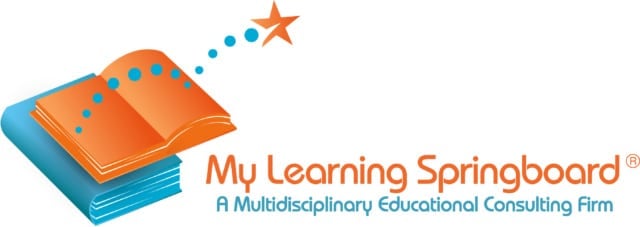 Do you remember fourth grade? You were not yet confronting middle school angst but no longer a little kid in your elementary school. You likely were not worried about your overflowing inbox, catching up on laundry, or figuring out dinner plans back then. What were you worried about? Think back. Ahh, that’s right. Your math homework. You likely just learned how to multiply two digit numbers. Multiply, carry, multiply, add, shift to the left, add, repeat. So many steps and, while it got the job done, you had no idea what you were doing or why you were doing it. It was just the way to solve multiplication problems. The standard algorithm. And, for something so complicated, once you memorized the computation patterns, it was pretty simple. No one mentioned partial products or alternative algorithms at all.
Do you remember fourth grade? You were not yet confronting middle school angst but no longer a little kid in your elementary school. You likely were not worried about your overflowing inbox, catching up on laundry, or figuring out dinner plans back then. What were you worried about? Think back. Ahh, that’s right. Your math homework. You likely just learned how to multiply two digit numbers. Multiply, carry, multiply, add, shift to the left, add, repeat. So many steps and, while it got the job done, you had no idea what you were doing or why you were doing it. It was just the way to solve multiplication problems. The standard algorithm. And, for something so complicated, once you memorized the computation patterns, it was pretty simple. No one mentioned partial products or alternative algorithms at all.
Fast forward a few decades and here you are, helping your fourth grader with their math homework. Multiplying two two digit numbers? Simple! You pull out a pencil and paper and start your standard algorithm tutorial. Multiply, carry, multiply, add, shift to the left, add, repeat. “Why do you do that?” they ask as you work through the steps with arrows and plus signs sketched in concert with your lecture. Why do you do that? No one ever covered that in the first round of standard algorithm instruction. You don’t have the answer you need to explain the complicated iteration of steps or why it works or how to figure out when it does not work. It was just the way you learned. Your math instruction focused on efficiency rather than conceptual understanding. Your fourth grader takes the pencil and demonstrates partial products multiplications. They draw a rectangle, call it an array, and label each side. They then divide their numbers up by place value, end up with four equations in the rectangle and add their totals together to arrive at a final answer. It worked, sure, but is it the most efficient? Five minutes and four extra steps later, they just arrived at the answer they could have gotten using the standard algorithm you modeled.
Has Math Really Changed?
Has math really changed that much over the years? The long and short of it is no. Math has not dramatically changed since you were in school. Fourth graders still, sometimes begrudgingly, learn to multiply and divide. Scrap paper and times tables are still important elements of the upper elementary school math experience. And, while on the surface, solving using the standard algorithm and solving using partial products and an array seem wildly dissimilar, conceptually, they fall along the same continuum in computational understanding.
Using the standard algorithm, you learned that to multiply is just an annotated version of what your child is doing in solving by place value on an array. Their computational instruction has slowed down and added this important stepping-stone in their math learning journey to ensure that they know why they are doing when multiplying.
Partial Products
There are a few important reasons to learn multiplication using partial products and a visual model. First and foremost, it supports a strong conceptual understanding of the place value element of multiplication. When you learned to use the standard algorithm and shift your second row of numbers over to the left, it is likely that no one explicitly reinforced that “the shift” actually symbolized the multiplication of ten in the overall problem. When that concept is not developed, it is incredibly challenging to conceptualize the magnitude of the numbers in a problem. Dividing numbers into place value using an array helps ground the abstract concept of magnitude in a very tangible construct through the use of the array. A rectangular array, when set up to solve a multiplication problem, is nothing more than an area problem. Young mathematicians can see the magnitude of each piece of the multiplication equation as they multiply one side of the array by the other side, often on graph paper, in a set up that is just an extension of their previous geometry work. Additionally, this visual conceptualization of multiplication lends itself to understanding more efficient and flexible computation strategies. For example, using an array to show that 3×4 and 6×2 are the exact same area helps illustrate the commutative property and supports understanding why doubling and halving when multiplying leads to the same product.
As students grow in their mathematical development and expand their computation fluency, arrays become more abstract and less representational, serving as more of a graphic organizer for solving than as a direct representation of area. At that point, students may shift to using the standard algorithm entirely, now coupled with an appreciation for what each step means in the greater solution and an expectation for the magnitude of their product. However, arrays will continue to be an important component of their mathematical trajectory and an essential building block of understanding. As students move from whole number work to fractions computation, the array lends its support again, providing a meaningful context for fraction multiplication and division.
Supporting Your Mathematician
But, how can you support your budding mathematician when the math work feels new and complicated? There are many ways to appreciate and develop your students even when their math instruction might look different than your own:
- Be a student, not a teacher. Homework is reinforcement for learning that already happened in the classroom. When your child asks for help on their homework, ask them to show you what they learned today and what they are able to do. Often, students just need to talk through their process and refer back to their previous learning to work through a challenge. By asking your student to teach you what they know rather than you teaching what they do not know, you are empowering them to synthesize their understanding and reinforcing that their classroom work is valuable and important.
- Use YouTube for support. A quick search in YouTube for partial products, array multiplication, or even fraction multiplication on an array will lead you to hundreds of competent, skilled teachers delivering quick lessons on these concepts. By spending ten minutes watching an instructional video, you and your student can learn alongside each other and make it through math homework unscathed!
- Sign up for an account on Splash Learn. This website is free and content is grouped by grade level standards so it is accessible and easy to navigate. In addition to games and tasks that align well to classroom strategies, the website offers plenty of parent support with definitions and examples of most math concepts and ideas, such as partial products.
- Reach out to your child’s teacher. Most math curricula actually includes parent resource tools! Ask your child’s teacher if there is a parent guide, website, or workbook to help you understand what your child is learning. They should be able to point you in the right direction whether it’s partial products or any other concept or topic.
By Marisa Krohn, Learning Specialist

